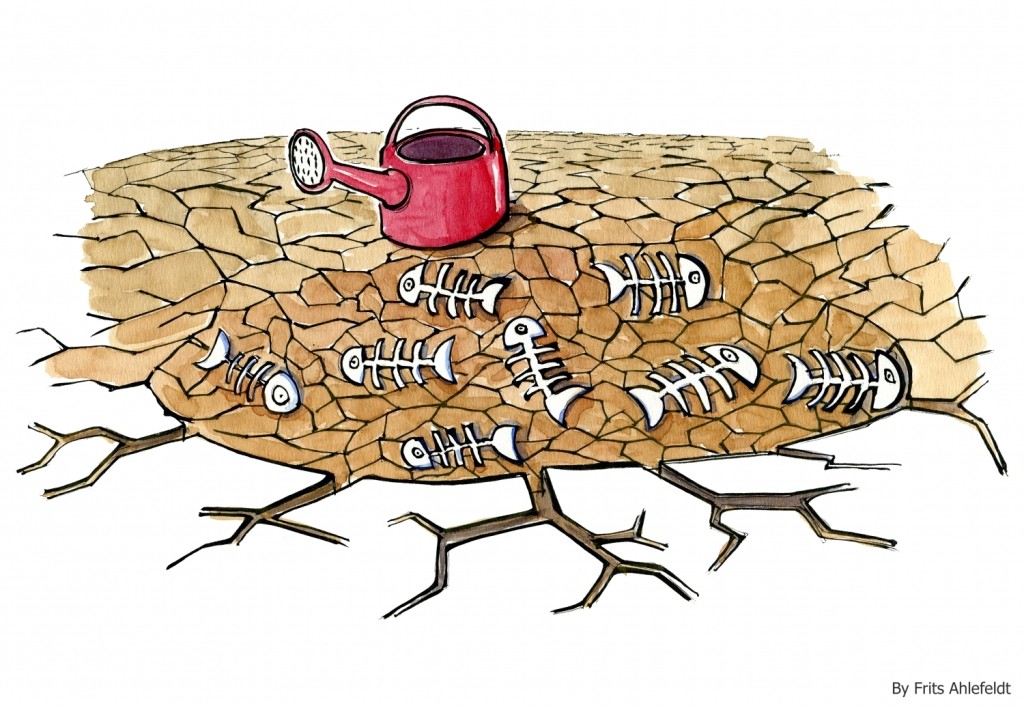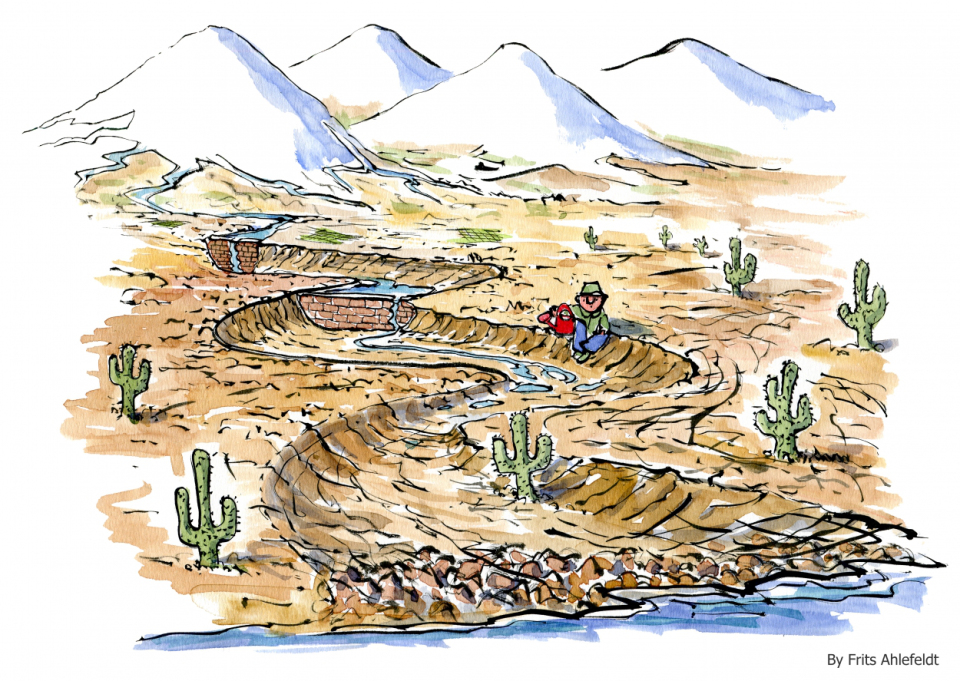For many years, I was a full-time activist of a mass movement that is opposing one of India’s largest dam, irrigation and hydropower projects. Some time in this period, a batch mate from IIT asked me, “Don’t you think India needs such modern technology as dams, satellites, etc.?” I found this question very interesting as it termed ‘dams’ as a ‘modern’ technology, bracketing it with others like (artificial) satellites. I had two issues with such labelling.
First of all, dams as a technology are hardly ‘modern’ in the chronological sense. Humankind has been constructing dams since millennia. True, the size, scope and storage capacities of dams have increased by orders of magnitude over the centuries. Moreover, technologies involved in building these dams – materials, design methods, construction techniques – have all become much better, more sophisticated, and more complex. But at its core, dams as a technology have around for long. So I wondered whether we could really call them modern.
Another meaning of calling something modern is to indicate that it represents progressive intervention – progressive in the sense of enlightened thinking. Such a ‘modernity’ of dams is certainly questionable, for dams, in the very process of addressing our water needs – particularly as they grew in size and scope – have had huge adverse impact on people, and on the environment. Indeed, the entire range of technologies to control and manage water resources – dams, diversions, canals, pumping, hydropower – has led to displacement of people, drying up of rivers, salinisation of land and water, deforestation, destruction of biodiversity and several other impacts. The levels of impact are such that they have often tended to outweigh the benefits they have brought.
Given this, a very important question is whether we can then depend upon these technologies to help us meet our water needs in the future, whether they can address the multitude of issues and problems we face in the coming days to manage water resources?
The entire range of technologies to control and manage water resources – dams, diversions, canals, pumping, hydropower – has led to displacement of people, drying up of rivers, salinisation of land and water, deforestation, destruction of bio-diversity and several other impacts.
The answer, to me, is certainly “yes”, but it is subject to a very different understanding of technology. I would argue that technology as a system – as a collection of scientific understanding and of various techniques – is quite different compared to its individual components. The same techniques and scientific understanding may be deployed differently to obtain strikingly different results. This ‘deployment’ of technology is crucial to whether technological interventions are progressive or not. Consider for example the case of the automobile. The way that automobile technology has been deployed in USA has created a system that is vastly different to the one that can be seen in say Europe. The system in USA has not only created a unique mode of transportation that is centred around the personal/private automobile, but in fact, it has influenced and moulded popular culture, thinking and everyday life in myriad ways. The same automobile technology deployed in Europe has produced a very different system.
Certainly, while some of the differences in deployment are related to specific local factors like area of the country, population density, etc., equally important have been societal choices. These are choices in terms of how and where to use the technology, for what purposes and so on. The sum total of these societal choices coalesces into a vision, and it is this vision that shapes how technology is implemented and what systems it creates. The water sector – in India and elsewhere – is no exception. The state that the sector is in today – and particularly the devastation that characterises most water resources – owes much to the vision that has driven water resources development in the country.
We need a very different, new vision of water resources management, a paradigm shift.
The central theme of this vision – if it can indeed be dignified as such –has been that “any drop of water that goes to the sea is a waste” and the effort has been to extract every last bit of water from rivers and other water bodies. Moreover, not only is this a highly anthropocentric vision, but even within human society has favoured the elite and powerful sections. Inequity has been part and parcel of the process, as has been a lack of concern for impact on the ecology and environment. The latter not only disregards the impact on non-humans, but also ignores the impact of ecological destruction on human communities. Tribals, rural populations and dalits have been the major sufferers. At the same time, rivers have dried up, or have been converted into sewage drains, or carriers of toxic effluents.
One is reminded of the song from the 1968 film Suhaag Raat, written by Indeevar, that goes गंगा मैय्या में जब तक ये पानी रहे, मेरे सजना तेरी जिंदगानी रहे (Let my beloved live for as long as there is water in mother Ganga). The singer is fondly wishing that her beloved lives forever, for it is believed that the Ganga will flow forever. Technology, deployed in the form of dams in the upper reaches of Ganga, has already rendered this belief naïve and false. And given that some of the tributaries, which areas much the Ganga as the main Ganga itself, have already stopped flowing below such dams, it would appear that the poor singer’s beloved must have departed much much sooner than she had ever thought possible. Many other rivers face the same fate. The Krishna, for example, has been declared a closed basin, that is, in many years its waters do not reach the sea.
What is happening to our rivers is only one part of the problem. Much is talked about these problems so I don’t want to dwell on them. Suffice here to point out that these problems, apart from directly impacting the lives and livelihoods of millions of people, are also threatening the very sustainability of the existing water supply and irrigation systems, and are barriers to meeting the water needs of the future.
We still will need many of these technologies to continue to meet the current and future water needs. However, we need a radical shift in the way these technologies are to be deployed, if we are to address current problems and avoid them in the future. We need a very different, new vision of water resources management, a paradigm shift.
It is interesting that many of the elements of this paradigm shift are being acknowledged even in the official circles. One of the important elements of this vision is to keep rivers flowing. In today’s terms, this is being articulated as maintaining environmental flows, or e-flows. E-flows are not just ‘minimum’ flows, but are flows that mimic the variability of the natural flows in a river, and “sustain freshwater and estuarine ecosystems and the human livelihoods and well-being that depend on these ecosystems”, which is the universally accepted definition of e-flows as enshrined in the Brisbane Declaration of 2007. A recent paper by the Ministry of Water Resources, Government of India, also accepts this understanding of e-flows. The Water Policy of Government of India, adopted in 2012, also mandates that all rivers will carry environmental flows.
The Government of India also has an ambitious program for Ganga Rejuvenation. It has declared that the “the long-term vision” for rejuvenating the Ganga “will emanate from the Ganga River Basin Management Plan being prepared by the Consortium of 7 IITs”. The basic principles of this Management Plan extend further the notions of e-flows. They require that river management be based on restoring the “wholesomeness” of the river, which in turn is defined by four elements, namely “aviraldhara [continuous and connected flow] and nirmaldhara [unpolluted flow] as also its ecological and geological integrity.” They also bring in the notion of ensuring the connectedness of the river in three directions – lateral, longitudinal and vertical.
One would expect that these notions would also be eventually extended to all other river basins in the country. Of course, while some of these concepts are being articulated, the Government, with its affliction of multiple personality disorder, is also pushing ahead strongly with projects like Interlinking of Rivers, which are the very antithesis of the principles articulated above. So whether there is a genuine, even if slow, change in thinking is difficult to say.
Water has to be seen as a social good before an economic good.
But the need is to go even beyond that. Keeping rivers flowing is only one part of the change in paradigm that is necessary. We need to bring in a more holistic and comprehensive vision for the water sector, instead of bits and pieces. Water has to be seen primarily as “a sustainer of life and ecology”, with the need to protect and conserve water resources, and reverse the adverse impacts that are already there. Water has to be seen as a social good before an economic good. There is a need to ensure equitable distribution of water, with allocation being done as per priorities defined by the Water Policy 2012. The policy lays down that “Safe Water for drinking and sanitation should be considered as pre-emptive needs, followed by high priority allocation for other basic domestic needs (including needs of animals), achieving food security, supporting sustenance agriculture and minimum eco-system needs.” Water for non-human use should also be maintained. These are some of the key elements of such a holistic vision for water. In short, this vision tries to define an approach to water whereby natural cycles and pathways shall be maintained as much as possible, an approach where equity will be a central feature, and where judicious withdrawals and consumption will be the aim.
Again, such a vision is present in many ways in the several drafts that the Government of India has prepared of a “National Framework Law for Water”. At the same time, many of the actions of the Governments (state and national) are very much against these principles.
While taking cognizance of these realities, one needs to appreciate the steps that are being taken in the right direction. Ultimately, in order to be able to address the current and future challenges in the water sector in a sustainable and equitable manner, we have no option but to pursue the building of such a holistic vision, and to use this vision to define our plans and interventions in the sector.

